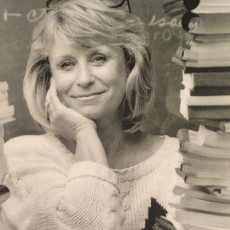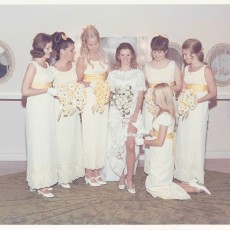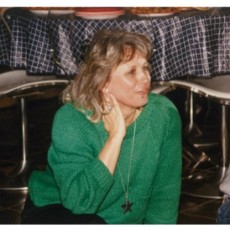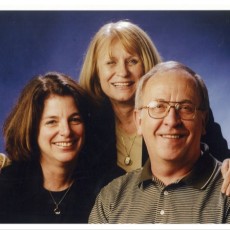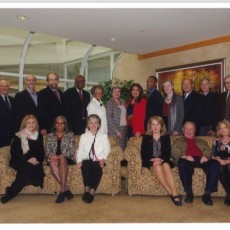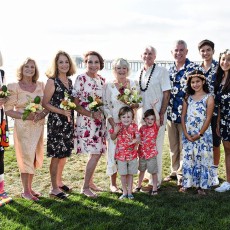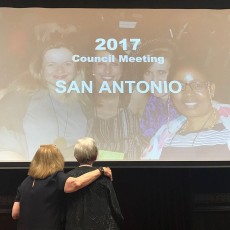Eva Baker
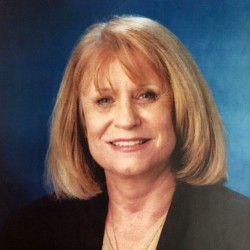
Eva Baker is a Distinguished Research Professor of Education in the Graduate School of Education and Information Studies at the University of California, Los Angeles (UCLA). She also serves as Co-Director of the Center for the Study of Evaluation (CSE) and National Center for Research on Evaluation, Standards, and Student Testing (CRESST) as well as its project, the Center for Advanced Technology in Schools (CATS). Both a three-time alumna and distinguished member of the faculty at UCLA, Baker earned her bachelor’s degree in English as well as her master’s degree and doctorate in education there before beginning a career spanning more than five decades. She is widely recognized for her scholarship in the areas of instruction and measurement, including the design and empirical validation of principles for developing instructional systems and new ways to measure complex human performance as well as the design and evaluation of assessment systems for education. As one of few female scholars in this area, especially during her early career, Baker has served as a role model for others in the field, including as Past-President of the World Educational Research Association (2010), American Educational Research Association (AERA, 2007), and Educational Psychology Division of the American Psychological Association (1985-1986), and as a member of the National Academy of Education. Notably, she co-chaired the committee that produced the Standards for Educational and Psychological Testing (1999) and was congressional appointed as the Chair of the Board on Testing and Assessment and committee member of the National Council on Education Standards and Testing, National Research Council, and The National Academies. Her service in advisory roles includes departments of education, local education agencies, and teachers’ associations in more than 20 states; non-profit organizations; private sector employers and foundations; the U.S. military and contractors; and international entities and ministries of education in more than 15 countries. In recognition of her research and scholarship, she has received numerous awards and honors, including the Henry Chauncey Award for Distinguished Service to Assessment and Educational Science (2007, Education Testing Service), E.F. Lindquist Award for Outstanding Applied or Theoretical Research in the Field of Testing and Measurement (2013, AERA and American College Testing Program), and Robert L. Linn Distinguished Address Award (2014, AERA Division D Measurement and Research Methodology). Her extensive scholarly record with more than 500 publications, to date, includes the following most recently authored/edited books: Assessment of Problem Solving Using Simulations (2008, with J. Dickieson, W. Wulfeck, and H.F. O’Neil), International Encyclopedia of Education (3rd Edition) (2010, edited with P. Peterson and B. McGaw), Teaching and Measuring Cognitive Readiness (2014, with H.F. O’Neil and R.S. Perez), and Using Games and Simulations for Teaching and Assessment: Key Issues (2016, with H.F. O’Neil and R.S. Perez).
Curriculum Vitae Suggested readingsVideo #1 – 25 Cents More
Born and raised in New York to parents who married young in life, Dr. Eva Baker reflects on her early years as a child of teenagers and how her family’s move to sunny California shaped her personal and professional journey in the years to come. While Dr. Baker notes some of the social challenges of attending public schools in Hollywood with the children of celebrities, she was always a good student who enjoyed reading and attending sporting events with her father at the University of California, Los Angeles (UCLA), her future alma mater. She candidly shares the impetus for her later decision to earn a teaching credential as part of her master’s degree rather than focus on a pursuing a career as a writer, noting that a graduate assistantship in education paid 25 cents more per hour. In this clip, hear more from Dr. Baker about her path to the academy and beginning of a career at UCLA spanning more than five decades.
Video #2 – “Getting a Real Answer”
Reflecting on her early career, Dr. Eva Baker shares her experiences as one of few female faculty members during an exciting time of change at the University of California, Los Angeles. She describes working with prominent scholars in the area of assessment as “a different kind of reality” than being an English major and thinking at the time that empirical studies were a way of “getting a real answer.” Explaining that there is “a test for every purpose,” Dr. Baker cautions that issues of test validity and related inferences are often disregarded, especially when “trying to retrofit” an existing test in lieu of investing time to create a new one. Watch this clip to learn more from Dr Baker about the future of technology in creating multi-purpose tests for a fast-changing world.
Video #3 – Who Would Make a Quality Teacher?
Dr. Eva Baker, often the lone female in academic and professional circles throughout her career, shares how her strong relationship with her father, including their shared reading of Greek mythology, astronomy, and philosophy, influenced her development as a learner and scholar. She explains her early work in assessment, noting that she “started with the idea of validity as a number” and later shifted focus to the inferences drawn from and uses of test data. In this clip, hear more from Dr. Baker about the promise of computer gaming as a tool for teaching and assessment and the important question of “who would make a quality teacher” for the next generation of students.
Video #4 – The Person Who Told the Truth
In this clip, Dr. Eva Baker takes a retrospective view of her career, sharing that she is most proud of the ways her scholarship has influenced the work of others, even if not directly acknowledged. Rather than gaining recognition for a specific idea or concept, she would rather be known as “the person who told the truth” about “what was good and not so good about the measures they were using” with credibility and integrity. While conducting her latest research in collaboration with her husband, Dr. Harold “Harry” O’Neil, she also spends time enjoying activities such as art and exercise and hopes to write a narrative. In this clip, hear Dr. Baker’s advice to emerging scholars about how to take risks and have fun in the academy.
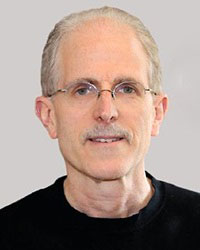
Dr. Randy Bennett
characterizes his colleague and friend, Dr. Eva Baker, “as a person who loves life and all it entails.” Randy explains that, for Eva, “that means loving her family, and being there for them, doing the best she can to make a difference in the world by helping to improve how it is we educate and evaluate learners, experiencing as much of the world and its wonderful diversity as she can, being a great friend, and sharing her wisdom, experience, and wonderful nature.” Sharing a humorous story about Eva and her husband, Harry, Randy explains that the event is “funny only because if you don’t laugh about it, it would be too painful.” He recalls one of their home improvement projects, a redesign of the backyard, which went horribly ari. Noting that the project was often “running in the wrong direction, with the cost rapidly increasing and the end-date just as quickly receding,” Randy describes a few of the many pitfalls, including “contractors doing bankrupt after being paid [and] doing flawed work that had to be undone and redone by others.” Randy explains that Eva and Harry “likened [the experience] to being sentenced to a time at a very high-priced, and extremely bad, comedy club,” adding that witnessing the ordeal “made him decide to rent.” Having originally met his long-time colleague and friend “through a common interest in improving educational assessment,” Randy describes Eva’s founding of CRESST as one of her most significant legacies. He explains that “over its history, CRESST has contributed centrally to our understanding of assessment for education and training in schools, industry, and the military,” including “explor[ing] new measurement methodologies and assessment approaches.” Adding that CRESST’s “research output has been phenomenal,” Randy notes that “Eva put into place an infrastructure that not only attracted funding for highly significant research, but [also] provided an onsite opportunity for graduate students to learn the practice of assessment research from accomplished leaders in the field.” While Randy notes Eva’s significant contributions to educational research and scholarship “are many,” he affectionately describes her as a quintessential “Valley person.” He explains that she “grew up in LA and went to Hollywood High, has blonde hair, and wears sunglasses every time he sees her,” adding that “having grown up in Brooklyn, she was the living picture he had in his mind of ‘southern California’ [and] still is.”
Joyce Linn
Joyce Linn characterizes Dr. Eva Baker as “always ready to help anyone who needs it” and shares stories of the many ways she has offered support over the years. Sharing that “most of her relationship with Eva has been through her husband, Bob Linn, [as] they were colleagues for many years,” Joyce explains that she “enjoyed it on the periphery, pleased with the collegiality he enjoyed with their work together.” When Joyce lost her husband due to health issues, she recalls Eva’s kindness towards her and her family, characterizing her as “a caring strength…even as she dealt with her own grief.” Joyce explains that Eva and her husband, Harry, “insisted on coming to be with her family when Bob died” and that she took “major steps in organizing meaningful memorials for him among professional circles they shared,” adding that Eva “worried about her.” Joyce recalls how Eva and Harry’s kindness and hospitality extended to her children and grandchildren as well, noting that they went above and beyond, “spending many hours…hosting each of her sons and their sons as they explored West Coast colleges.” Reflecting on Eva’s many professional accomplishments, Joyce notes that she “cares about her role in advancing society’s educational results.” Explaining that “in her observation, Eva is determined to be the human Energizer Bunny,” Joyce notes that “she seems to only be happy if she has enormous plans and workloads and the pressure of deadlines.” Joyce recalls that they once “talked of winding down in Fiji or studying art in France,” laughing at what she now calls “a pipe dream” and explaining that she has “given up waiting for Eva to relax…for a least a bit.”

Dr. Scott Marion
Characterizing Dr. Eva Baker as a “mentor, colleague, and friend,” Dr. Scott Marion first met her while pursuing his doctorate and working as an assistant at the Center for Research on Evaluation, Standards, and Student Testing (CRESST). Recalling that Eva “took him under her wing and always seemed to take an interest in his career,” Scotts explains that he “always viewed Eva as a mentor, but appreciated that she viewed him as a colleague,” adding that “she was just that type of mentor!” He reflects on his experiences as a graduate student, recalling that he once had an opportunity to interview Eva as part of project evaluating CRESST and noting his surprise when she “nervously peppered him with questions” in preparation. He remembers that they “both had a good laugh,” when he teased her that she should not be worried about an interview when she “runs an organization…named the Center for the Study of Evaluation.” Continuing in her role as a mentor after he graduated, Scott notes that he “relied on Eva for counsel and collaboration” when he accepted a position as the Wyoming assessment director and that “she was one of the first to call to offer him a job” when he “got fired by the newly elected state chief” four years later. Although he had already accepted a leadership position at the Center for Assessment by then, Scott recalls that they “immediately began discussing ways [his organization] and CRESST could better collaborate…[which] they did successfully for many years.” He describes his experience working with Eva, noting that she is “one of the very few people who has key-noted their annual conference twice.” He recounts a humorous story from one such CRESST conference in the mid-1990s, including her efforts to help her peers learn the moves for the Macarena, a popular new dance at the time, by organizing lessons on the dance floor with her colleague, Lynn Winters. Scott recalls the scene as “quite a sight to see—a bunch of measurement experts trying to learn new dance moves” but explains that “was characteristic of Eva…[who] was always the first one up when work needed to be done or where there was fun to be had.” Reflecting on her most significant professional accomplishments, Scott notes that “Eva doesn’t get enough credit for her work on validity, other than the oft-cited [article with her colleagues, Drs. Robert L. Lynn and Stephen B. Dunbar], but her work on validity by design…has been really important for showing assessment specialists and others the importance of connecting cognition and assessment.” Scotts explains that “she is in good company…but in addition to her conceptual advances, Eva’s clear communication style allows her important ideas to be spread and understood.” In addition, he notes that “Eva has led the way on conceptualizing accountability validity, which is not simply an extension of assessment validity,” adding that he and his colleagues at the Center for Assessment “have benefited greatly from her leadership in this area.” Capturing the sentiment of others, Scott characterizes Eva as “one of the most forward-looking people” he knows, explaining that he “always feels like he is playing catch-up when it comes to Eva’s work on technology-based assessment.” Scott describes Eva as “probably the first major assessment leader to move into game-based assessment because she recognized the opportunities to engage students…and better understand what [they] know and can do,” predicting that she “will continue to be 5-10 years ahead…, but he’s happy to try to follow her trail!”
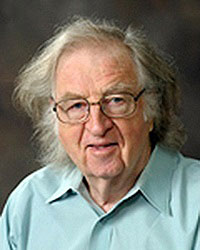
Dr. Robert Stake
Dr. Robert “Bob” Stake recalls meeting his long-time colleague and friend, Dr. Eva Baker, at a gathering at the University of Illinois, which included several young program evaluation specialists. He explains that “one topic of discussion was about the relationship between a young person’s experience and interests and the kinds of evaluation they would take up in their career.” Bob recalls his efforts to develop a casual interest inventory that could be used to create a profile of a young scholar who, based on his/her experience and interests, might work at one of several major universities, including the University of California, Los Angeles (UCLA). He characterized the profile of a likely scholar at UCLA “as having an interest in standards, psychometrics, behavioral objectives, indicators, and hypothesis testing.” Bob recalls Eva’s surprise when her results aligned with the profile of a scholar at the Center for Instructional Research and Curriculum Evaluation, who was characterized as “having an interest in personal stories, contexts, ethnography, observations of teaching practice, and communities.” According to the inventory, Bob explains that Eva’s research would likely include case studies, responsive evaluation, and qualitative methods, which he notes was “pretty far out for 1972.” Describing one colleague’s reaction, Bob recalls Ernie House’s response that the inventory “shows one thing,” namely that Eva “didn’t have a future at UCLA,” where she has now been for more than five decades.
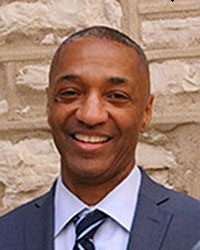
Dr. William Tate
Dr. William “Bill” Tate explains that he first met Dr. Eva Baker through their leadership activities in the American Educational Research Association (AERA), where they each served on the Executive Board as part of their presidency. Noting that they “developed a wonderful relationship,” William considers Eva to be both a friend and colleague, adding that he “can count on her to be supportive and encouraging.” Recounting an incidence that occurred at one of their AERA meetings, William describes a dinner scene during which a colleague fainted. Rushing to his side along with Eva and other participants, Williams notes his colleague was “breathing without difficulty” and had “signs of dehydration.” Explaining that he “remained calm” in comparison “to others buzzing about,” William recalls his assessment that his colleague “would be fine” and suggestion to “get him some water.” In retrospect, he explains it is “fortunate [that he] was correct” but notes that Eva “joked about his bedside manner” afterwards, while they “bonded over an after-dinner drink—water.” Making another observation about Eva, William describes her as having a “serious shoe obsession,” which she shares with their colleague, Gloria Ladson-Billings. Teasing that Eva and Gloria often “discussed shoes as if they were people” at AERA Executive Board meetings, William recounts how they “went back and forth about colors, heels, sparkles, and so on” as part of the “ritual of the shoe!” In addition to her professional accomplishments in the areas of assessment, evaluation, and measurement, William cites Eva’s leadership in the creation of a fellows program during her AERA presidency as particularly impactful. He describes her idea as “an important programmatic concept,” noting that “this program continues as a robust group of talented scholars.” Characterizing her as “serious, yet funny,” William describes Eva as one who “is forward thinking, while respecting the past,” “brings toughness with empathy,” and “exudes a balance that is rare and winsome.”
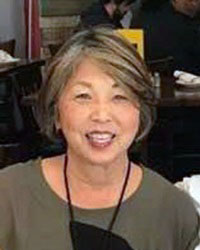
Cheryl Tyler
Having served Dr. Eva Baker in an administrative capacity at the University of California, Los Angeles (UCLA) for nearly 30 years, Cheryl Tyler shares how their professional relationship developed into a “very personal and friendly” one over time. As “one of her assigned ‘go-to’ administrators in the campus office that served as a clearinghouse for submitting research proposals…and negotiating terms on the resulting contract and grant awards,” Cheryl recalls how she provided support to Eva and her colleagues on many projects over the first two decades of their relationship. Explaining that Eva then hired her and a close co-worker, Sherry Miranda, as chief academic administrators when she assumed the role of acting dean in the UCLA Graduate School for Education and Information Studies, Cheryl describes how “all 3 of us adjusted to new roles with serious challenges.” She notes that their connection as a trio “grew more personal, because they had to struggle together to resolve problems” rather than considering Eva to be a “customer.” Cheryl recalls that “Eva was always coming up with problems that would stump them and force them to become very creative in resolving, if at all possible,” adding that these were “often situations that had to be ‘fixed’ because Eva had already taken action or made a commitment that skirted policy guidelines or had no precedent.” Cheryl describes these precarious situations, explaining the Eva “acted on impulse, and then came to [Sherry and her] to clean up. And she knew it—she only came to them because she had been told she couldn’t do what was done, and she doesn’t usually take no for an answer.” Once she and Sherry both worked for Eva in the same department, however, Cheryl explains that they “became her co-conspirators” while at the same time they “had to follow the rules.” Cheryl notes that “the tougher the problem she presented, the greater the challenge and satisfaction in resolving it,” adding that it was “always a game with Eva.” “In addition to having to help Eva stay out of trouble constantly,” Cheryl describes “learning to work with Eva’s style—just like everyone else in her huge research center.” Reflecting that she “knew Eva to be a creative idea person, who essentially left it to everyone else around her to carry out the essential details,” Cheryl recalls that she “would literally utter or jot down a few (sometimes enigmatic) words, and expect an entire project proposal or report to be produced for her review that was letter perfect—and all under incredibly tight deadlines.” Noting that Eva’s “whole life seemed to operate like that,” Cheryl explains that she had “vast numbers of loyal, hard-working, dedicated staff who seemed to know exactly what she wanted and stuck with her forever…because she cared about and treated them well.” She concludes that Eva “wants to work forever” and notes that she has already “outlasted most of [her colleagues and staff] by decades.” Cheryl notes in retrospect that “although Eva sometimes raised issues or created situations that challenged the rules and standards, it was that creativity and ingenuity that made her stand out in her field and inspire others around her, including some very talented young scholar.”

Dr. Edys Quellmalz
Dr. Edys Quellmalz characterizes Dr. Eva Baker, her “close friend and valued colleague” of 50 years, as “nurturing, determined, innovative, [and] a role model for professional women.” As her first doctoral advisee to receive a Ph.D., Edys shares that Eva has played in important personal and professional role in her life, including serving as a bridesmaid in both her first and second weddings, even holding the first reception in her backyard. As her former teaching assistant, Edys recalls several times when they “would show up at class wearing similar outfits and colors.” She shares a humorous story about Eva’s choice of fashion at her own final oral exam for her doctorate, noting that she had initially worn fishnet stockings but had to “rush home to change into more conservative” ones before the event. Reflecting on Eva’s many professional accomplishments, Edys explains that she “has always emphasized the need for assessment to inform instructional decision-making—to serve the needs of teachers and students,” including “pioneering many methods of formative classroom assessment” and “leading many efforts in assessment design to go ‘beyond the bubble’ and include performance assessments” as well.
